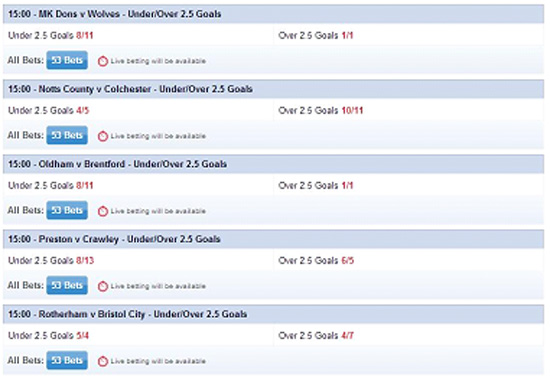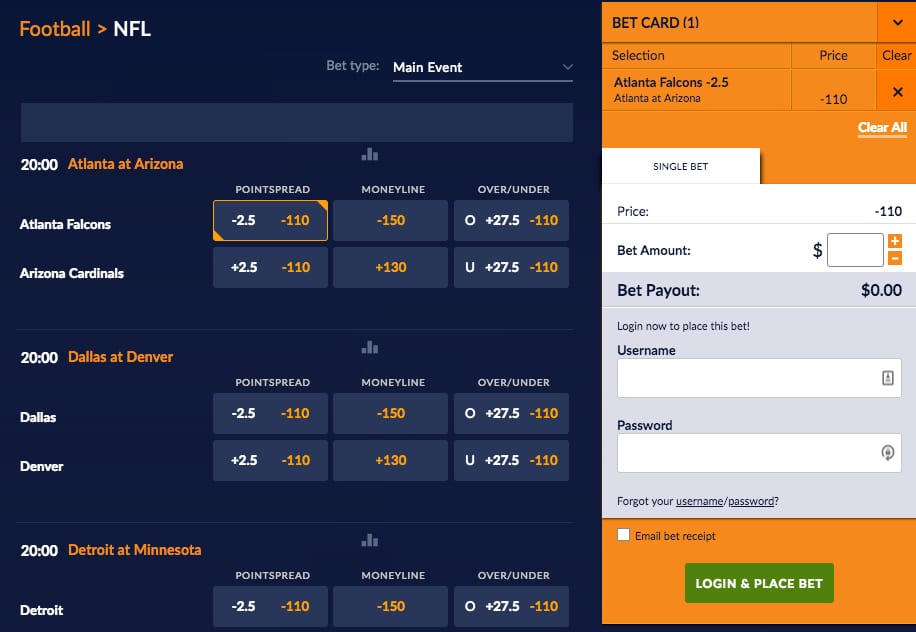Under 2 Meaning In Betting


The plus (+) and minus (-) in sports betting can refer to either the point spread or betting odds. In terms of the spread, the ' - ' always refers to the favorite and the ' + ' always refers to the underdog. For example, you can bet the Dallas Cowboys as a -7 point favorite to beat the Green Bay Packers or the Packers as a +7 point underdog. If you bet the Cowboys -7 and they win by more than seven points, you win your bet. Similarly, if you bet the Packers +7, as long as they lose by less than seven points or win outright, you win your bet.


Odds Meaning Betting
The lower number also means a lower payout, which is always the case for betting the favorite on the moneyline. A $100 bet on Arsenal +150 would net $250, while a $100 bet on Everton +190 would net $290. Going further, a $100 bet on the draw at +220 would payout $320. Read More Sports Betting Q&As. The standard (and often implied) number is –110, meaning a successful bet of $110 would net $100 profit. This is the “juice” or “vigorish” (aka “vig”) for the house or sportsbook. What does Over/Under mean? The Over/Under is a set of odds in which you bet on whether the combined score will add up to more or less than the projected total number set by oddsmakers. Betting on over or under 2.5 goals is won of the most popular markets to football betting. It allows you to predict the total of goals in a game without having to pick a winner of the game. For an under 2.5 goal back to win the match must finish with two or less goals. For an over 2.5 goal bet to win the match must finish with three or more goals. A sports betting OVER/UNDER is a bet where you have to correctly predict the combined score of both teams. You have to pick if the total score will be lower or higher than the number set by oddsmakers – the people at betting sites who set the lines and odds.
It's a similar case for the betting odds, though favorites don't always have a ' - ,' especially in sports like baseball, hockey or soccer where final results are often decided by one run or one goal. It's especially the case in soccer since matches can end in draws, whereas a winner is declared in almost every other sport because of overtime rules. However, in most cases, the favorite will have a ' - ' in front of its moneyline odds while the underdog will always have a '+ .'
For an example of moneyline betting odds, you can bet the Eagles as a -150 favorite to win or the Giants as a +180 underdog to win. If you bet $100 on the Eagles to win at -150, you would net a payout of $166.70. If you bet on the Giants to win at +180, the payout would be $280 because they are an underdog.
Sports Betting Terms: Gambling 101 Glossary
For something like soccer, Arsenal could be a +150 favorite against Everton as a +190 underdog, while the draw would be set at +220. In this case, the payout would be decent for every situation mainly because the teams are even and there are three possible results compared to just two for something like football (unless they go scoreless in overtime). In this case where both teams have a ' + ' in front of their odds, the team with the lower number is the favorite. The lower number also means a lower payout, which is always the case for betting the favorite on the moneyline. A $100 bet on Arsenal +150 would net $250, while a $100 bet on Everton +190 would net $290. Going further, a $100 bet on the draw at +220 would payout $320.